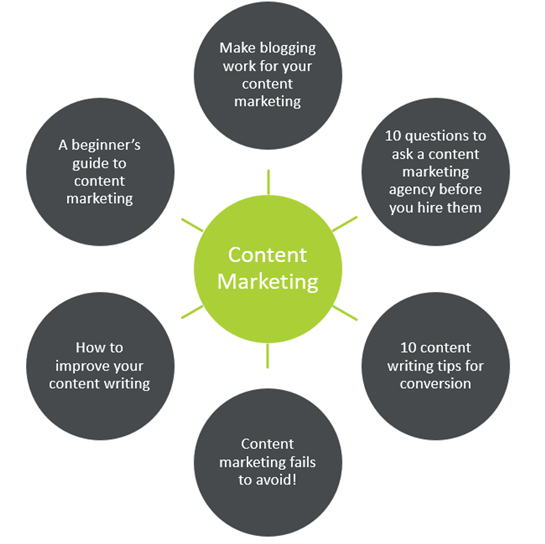When you’re already struggling for time and resources as a marketing manager, how can you ensure you’re getting the balance right between content and SEO for successful lead generation? Read this blog for our SEO content marketing strategy top tips!
Writing creative content can be exhausting – especially when you’ve got a marketing department to run!
The writing process takes up so much time – from your establishing your topic clusters to working on title creation and completing the final draft of a blog, there are a lot of steps involved in creating just one piece of content.
However, as a marketing manager, effectively overseeing the content your business publishes is essential. After all, you need it to pull in the right customers for the company.
When you throw in planning and running a successful SEO marketing strategy to the mix, you’ve suddenly got a lot of additional pressure weighing on your shoulders, and a lot to control.
So, how do you ensure you correctly divide the weight you’re giving to SEO and content when too much of one may mean you’re focusing too heavily on one aspect of the business?
Read on for top tips to strike the right balance in your SEO content marketing strategy and take a bit of the weight off your shoulders...
4 steps for successfully balancing SEO and content:
1. Do your research
Every good piece of content starts with research. And we’re not just talking about research around your chosen topics...
Start by finding the keywords you want your website to rank for
These keywords need to be relevant and have a good balance between search volume and difficulty – and the good news is that specialist software such as SEMrush makes keyword research easy.
Once you have your list of keywords, you can start implementing them throughout your website, choosing one keyword per page.
It’s good to have short-tail keywords on pillar pages and long-tail versions on your cluster topics – and make sure you remember to include your keyword naturally within your content as well as in the metadata such as title tags, image alt tags and meta descriptions.
It’s a good idea to have a look at what your competitors are ranking for, too
A useful tip is to get the Moz Google Chrome extension, which allows you to take a sneak peek behind your competitors’ websites, enabling you to see their meta descriptions, H1 and H2 tags, page title and keywords.
Also, during your competitor analysis, make sure you have a look at their website to see what they’re doing well and what inspiration you can take from them. For example, do they have calls to action (CTAs) on their sites? Do they promote their social media? Is their menu easy to navigate?
Doing all of this will let Google know that you’re serious about getting your website ranking higher on the search engine results page – and you’ll be rewarded for doing so!
A good SEO marketing strategy should be well thought out and purposeful, which is why the research and planning stage is so important.

2. Let your keywords inspire your content
Now that you have done the foundation work, it’s time to start building out your SEO content marketing strategy. Your keywords should inspire the type of content you produce.
For example, the keyword “restaurants in London” may inspire you to write a blog post entitled “Our top five restaurants in London”.
This way, you can ensure that your keyword is within your title, which will get a thumbs up from Google, and that your post is relevant to your business. Staying true to your SEO marketing strategy means that you can stay on track to reach your goals.
Your content ideas should also be inspired by your customers’ most frequently asked questions. After all, people turn to Google to get their questions answered before talking to the business directly.
So, if your content is readily available online and provides readers with helpful responses, you’ll be in with a good chance of generating leads.
3. Strengthen your on-page SEO
Creating a topic cluster will help you to plan out your SEO content marketing strategy and keep a good balance between the two.
A topic cluster consists of the main pillar page holding information on a broad topic, which links out to blog posts that then delve into different aspects of this topic in more detail.
These blog posts also link back to the pillar page, so that Google knows they are connected. Think of it like a big spider’s web of information, all linking together to form one big topic cluster – we’ve shared an example diagram for the topic cluster of “Content Marketing” below:

You could also link out to other websites to strengthen your on-page SEO, too. The most important thing to remember is to keep the content relevant and ensure that the sites you’re linking out to are reputable.
Doing this will let Google know that you are providing the most helpful information for your readers, plus, linking out to sites with a high domain authority may encourage them to return the favour – which will boost your ranking as well.
4. Have a good balance of short- and long-form content
Long-form content is content with 1,500 words or over that provides in-depth, useful information for your readers. However, if every single blog post was this long, you might do more harm than good.
Google likes to see pages with at least 300 words on them, but too much content may turn the reader away and put them off! According to research, 3,000-10,000 word posts get the most engagement; remember, though, it’s all about balance.
A study by HubSpot showed that the ideal word count for an article in 2021 was around 2,100-2,400 words, but with the average page visit lasting only 54 seconds, you have to capture your web visitors’ attention quickly before they click away from the page.
Long paragraphs of text aren’t going to keep people on your site, so think about how you can keep your long-form content from sending people away – make sure there’s plenty of white space, catchy headings or engaging imagery, for example!
Finding the right balance between SEO and content is an important step in nailing your SEO marketing strategy.
While they both work together in creating more website traffic, higher search ranking and generating conversions, SEO and content both require a lot of research, time, and effort. That’s why so many choose to employ a specialist agency to take care of this for them.
At Angelfish Marketing, we are passionate about helping business owners and marketing managers do better marketing, which is why we start with an initial free marketing report and consultation to see how we can help! This includes:
- a free one-hour consultation with a marketing expert
- a social media review
- a review of your current site performance
- a competitor review
- keyword analysis
- SEO progress
Sound good?


.png?width=500&name=A%20group%20of%20people%20talking%2c%20taking%20part%20in%20market%20research.%20(3).png)






